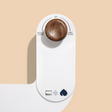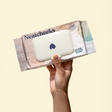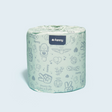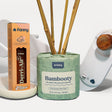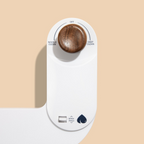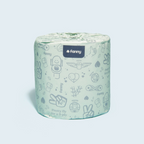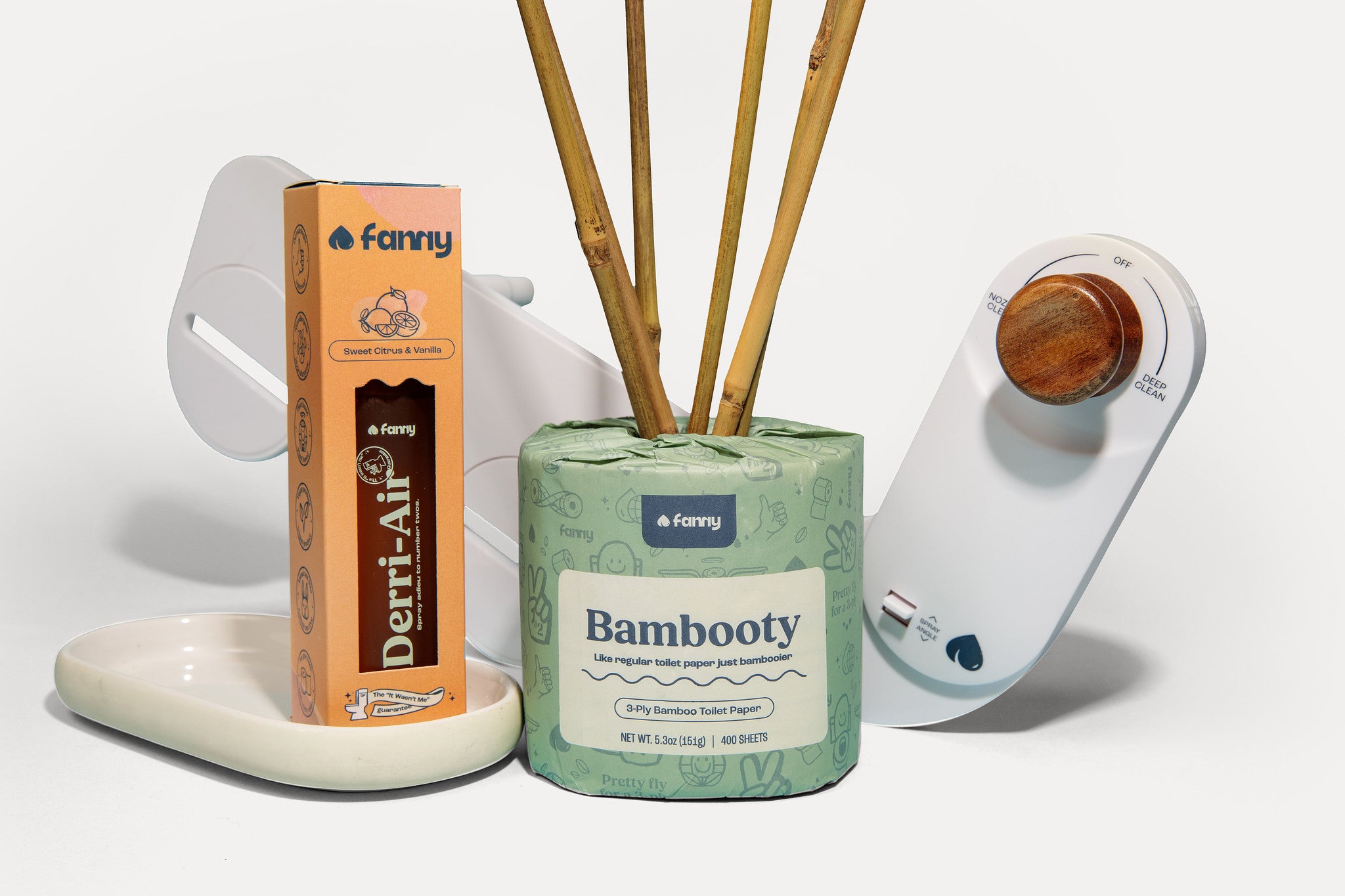Bidet vs. Toilet Paper: The Ultimate Showdown

Round 1: The Great Wipe vs. The Delicate Spray
Toilet paper is like that old friend who’s always been there for you. It’s dependable, easily available, and let's be honest, has been there for some of us during our most vulnerable moments. Plus, it’s a multi-purpose tool: you can fold it, wad it, wrap it around your hand like a mummy—it’s the Swiss Army knife of the bathroom. Not to mention that toilet paper comes in handy when we are sick, need to clean up minor spills, etc.
Bidets are like a fancy new buddy who has just returned from a semester abroad in Tokyo and can't stop talking about the amazing sushi. They provide a touch of sophistication and a promise of cleanliness that toilet paper may never be able to match. A Fanny bidet eliminates the need for numerous rounds of wiping and replaces it with a delicate stream of water. But then again, some might argue, why fix something that isn’t broken?

Round 2: Environmental Impact—Saving Trees or Saving Water?
Let’s talk about being eco-friendly. Toilet paper has been giving trees anxiety attacks for years. The average person uses about 100 rolls of toilet paper per year. Now multiply that by 330 million people living in the country, and you can practically hear the forests screaming in terror. But, hey, at least it’s biodegradable, right?
Fanny bidets, on the other hand, are the eco-friendly superheroes of the bathroom world. They use a fraction of the water needed to produce toilet paper, and they spare the trees. Although there are many different types of bidets, many options work strictly off of water pressure and don't require any electrical connections, just minimal plumbing knowledge, and a few common tools.
Round 3: The Cost Factor—Wallet vs. Comfort
Toilet paper costs can add up over time, especially when you start looking beyond the simple single-ply options. Whether you prefer the budget-friendly single-ply (aka sandpaper) or the ultra-luxurious triple-ply that feels like a cloud from heaven, there’s something for everyone. For the more Earth-friendly folks out there, there are also plenty of recycled pulp options and even bamboo toilet paper. Sure, over time, those rolls add up, but they’re still a small price to pay for convenience.
Now, a bidet? That requires a bit of an initial investment that really pays off over time with lower toilet paper costs. A simple cold-water bidet attachment might run you about $100. And if you’re going for the fully loaded, heated-seat, remote-controlled, jet-streamed model, you might as well start a GoFundMe campaign. Good thing our Fanny bidets are very affordable and they offer a luxury that toilet paper simply can’t match—like comparing a five-star spa experience to rubbing your face with a dish towel.
Round 4: The “What If” Scenarios
What if you run out of toilet paper? We’ve all been there at one point or another in our lives—stranded on the great white throne, calling out desperately for help, only to be met with the dreaded silence or disappointment when someone forgets to restock the toilet paper. The panic, the improvisation (paper towels, anyone?), the sheer horror. Toilet paper can betray you when you need it most.
And what if the water stops flowing, or your bidet malfunctions? Suddenly, your trusty sprayer becomes a very fancy, very useless, bathroom ornament. Plus, let’s not forget the learning curve—aiming can be tricky, and not everyone appreciates a surprise cold shower down there in the middle of the night if nature calls.
Bidet Usage By Country(Percentage of Households with Bidets)
Italy is practically the world capital of bidet devotion, they are everywhere, to the point where it’s actually illegal to build a new bathroom without one. Italians would sooner skip dessert than skip their beloved bidet. Meanwhile, in the United States, the bidet is often seen as some exotic European or Asian extravagance, reserved for posh hotels or the bathrooms of the ultra-fancy. Americans still cling to toilet paper like it's an indispensable family heirloom, blissfully ignoring the idea of water as a cleansing tool. But with growing whispers of its environmental and hygienic perks, the bidet may just yet win a few hearts (and rears) across the U.S.! Here are some stats:
Italy: 76%
Philippines: 53%
Argentina: 61%
Saudi Arabia: 53%
United States: 0.76%
Pros Vs. Cons(Bidets vs. Toilet Paper)
Bidets
| Pros | Cons | |
| Better Hygiene: Bidets use water, which cleanses more thoroughly than wiping with paper alone, which can leave residue. | Installation Required: Bidets require installation and access to a power outlet or plumbing for warm water. | |
| Eco-Friendly: Using a bidet significantly reduces toilet paper consumption, conserving trees and water used in paper production. | Learning Curve: Adjusting to a bidet can take time, as it’s unfamiliar to many. | |
| Cost Savings Over Time: Although there’s an upfront cost, bidets save money by reducing toilet paper purchases. | Upfront Cost: While some models are affordable, others can be costly, especially high-tech versions. | |
| Gentler on Skin: Water is less abrasive than paper, making bidets ideal for those with sensitive skin or certain medical conditions. | Space Constraints: Smaller bathrooms may not have room for certain types of bidet attachments or seats. | |
| Customizable Comfort: Many bidets feature temperature, pressure, and spray angle adjustments. | Potential Splashback: If the water pressure is too high or the spray angle is set incorrectly, some new users may have an initial mess experience. |
Toilet Paper
| Pros | Cons | |
| Convenience: Toilet paper is readily available and familiar; no learning curve or setup is needed. | Environmental Impact: Producing and disposing of toilet paper contributes to deforestation, water waste, and pollution. | |
| Portable: Easy to carry for travel or outdoor use where a bidet isn’t accessible. | Ongoing Cost: Unlike a one-time bidet purchase, toilet paper is a recurring expense that adds up over time. | |
| Immediate Drying: Toilet paper serves as both cleaning and drying, without extra steps. | Skin Irritation: Frequent wiping, especially with lower-quality paper, can lead to chafing or discomfort. Not to mention the PFAS chemicals used in toilet paper production. See here. | |
| No Installation: Requires no plumbing, electricity, or installation costs. | Less Thorough Cleaning: Toilet paper alone may not cleanse as thoroughly as water, potentially leaving residue. | |
| Budget-Friendly: Basic toilet paper is inexpensive and widely accessible. | Waste and Clogs: Excessive use can lead to plumbing issues, clogging pipes, and increasing maintenance costs. |

FAQs
Q: What exactly is a bidet attachment, and how does it work?
A: A bidet is an attachment that sprays water to clean your private areas after using the toilet. They use water pressure to provide a more thorough cleanse than toilet paper.
Q: Do bidets replace toilet paper completely?
A: Many people reduce their toilet paper usage significantly or even stop using it altogether. Some users prefer to pat dry with a small amount of toilet paper or a dedicated towel.
Q: Are bidets hygienic?
A: Yes! In fact, bidets are often considered more hygienic than toilet paper because they remove poop residue with water instead of spreading it. Many models also have self-cleaning nozzles for added hygiene.
Q: Do I need electricity for a bidet?
A: Most basic bidet attachments don’t require electricity and function using water pressure alone.
Q: Are bidets easy to install?
A: Most bidet attachments are designed to be DIY-friendly and can be installed in about 15 minutes. They typically connect to your toilet’s existing water line and come with all necessary hardware.
Q: Will using a bidet save me money on toilet paper?
A: Yes! Bidets can reduce toilet paper usage by up to 80%, which can save money in the long run and reduce household waste.
Q: Can a bidet fit on any toilet?
A: Bidet attachments are generally compatible with standard two-piece toilets. One-piece toilets and smaller or uniquely shaped models may require special attachments or won’t be compatible, so it’s always best to check the specifications.
Q: Can people with disabilities or limited mobility use a bidet?
A: Yes, bidets are ideal as all that is needed to use a bidet is to use the knobs, buttons or switches to activate the sprayer.
Q: Can children or elderly people use bidets?
A: Yes, bidets are often ideal for children, elderly users, and people with mobility issues, as they make cleaning easier and more thorough without requiring as much movement or effort.
Q: Can bidets be used to help people with hemorrhoids or constipation?
A: In a way yes, a bidet can help ease hemorrhoidal pain and improve bowel movements.
Q: Are bidets environmentally friendly?
A: Yes! By reducing the need for toilet paper, bidets lower the demand for paper products, which conserves trees, water, and energy used in manufacturing.
The Final Flush
So, who wins the battle between bidets and old-fashioned toilet paper? It really depends on what you value most. If you’re all about tradition, lower up-front costs, and having a roll always within reach, toilet paper is your champion. But if you seek an eco-friendly, more hygienic, and let’s be honest, better option, then a Fanny bidets is the way to go. Let’s not forget to take into account that the average household spends roughly $240 a year on toilet paper, which is certainly a lot more than a Fanny Bidet.
Or, if you prefer to err more on the side of caution, you’ll do what any sensible person would: use both! A little wipe, a little rinse—why choose when you can have the best of both worlds? After all, the bathroom is one place where being extra is perfectly okay.
